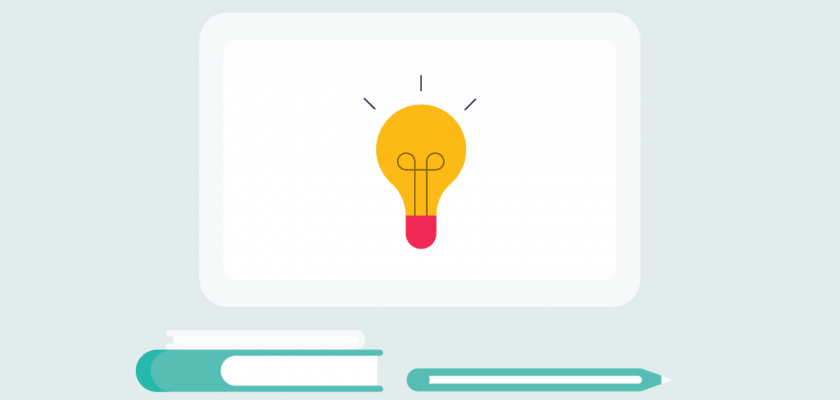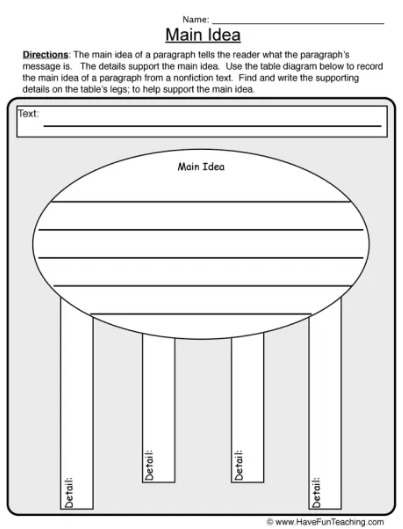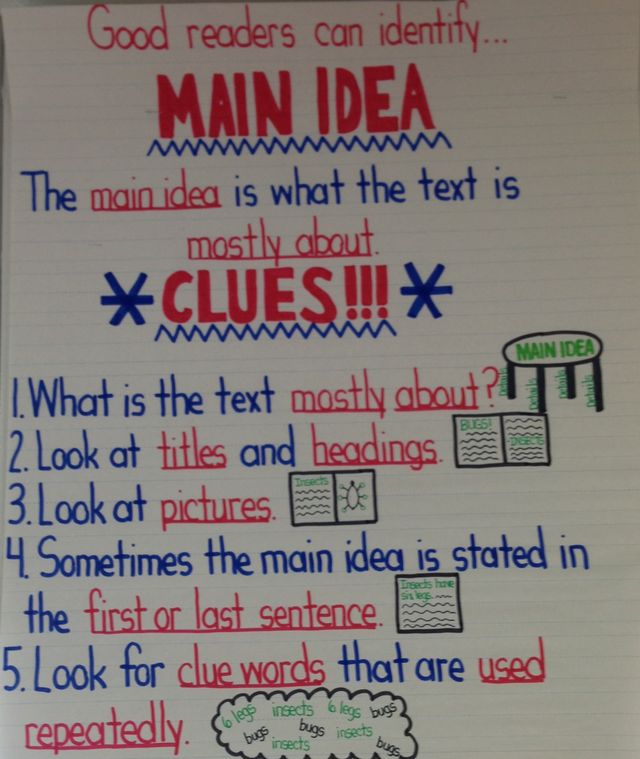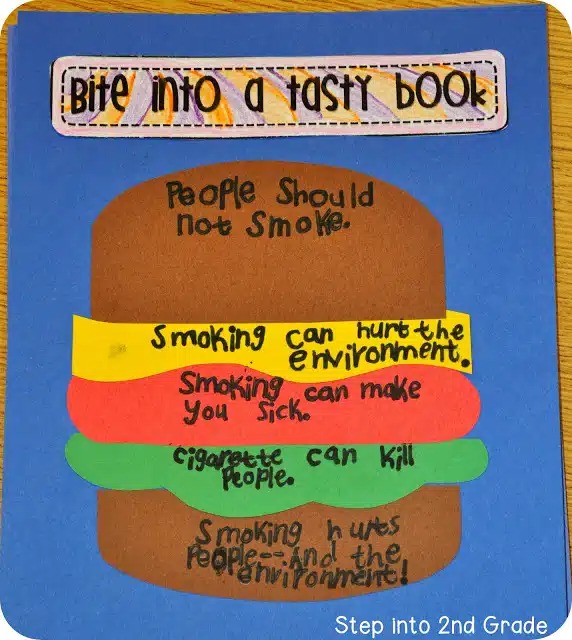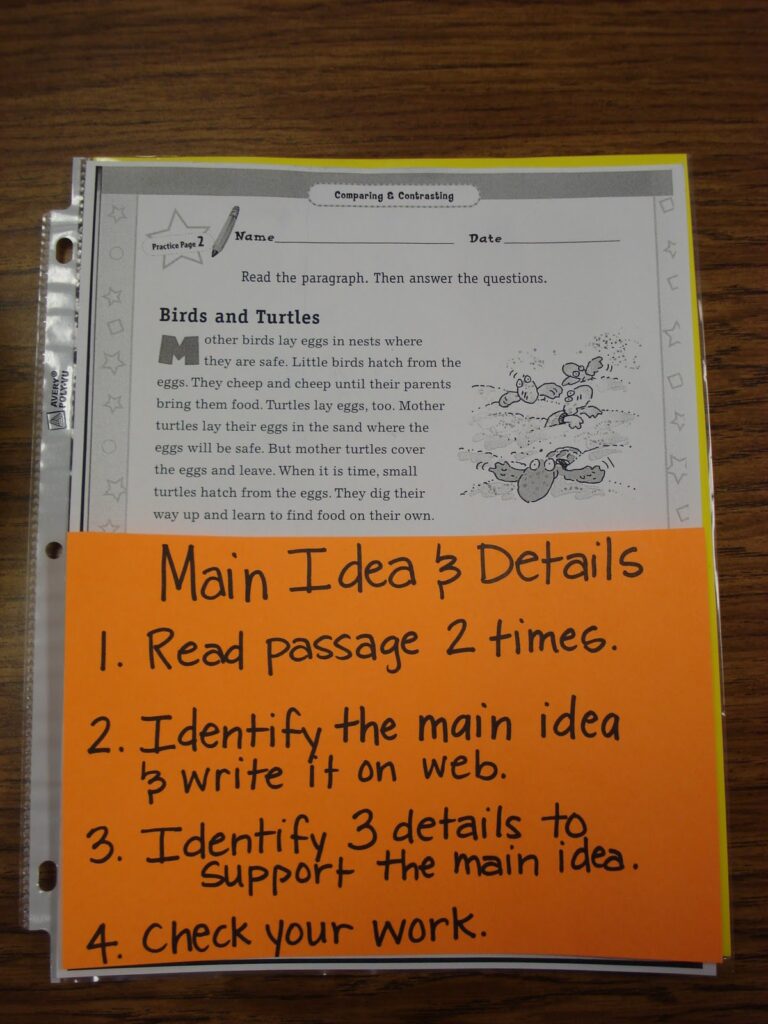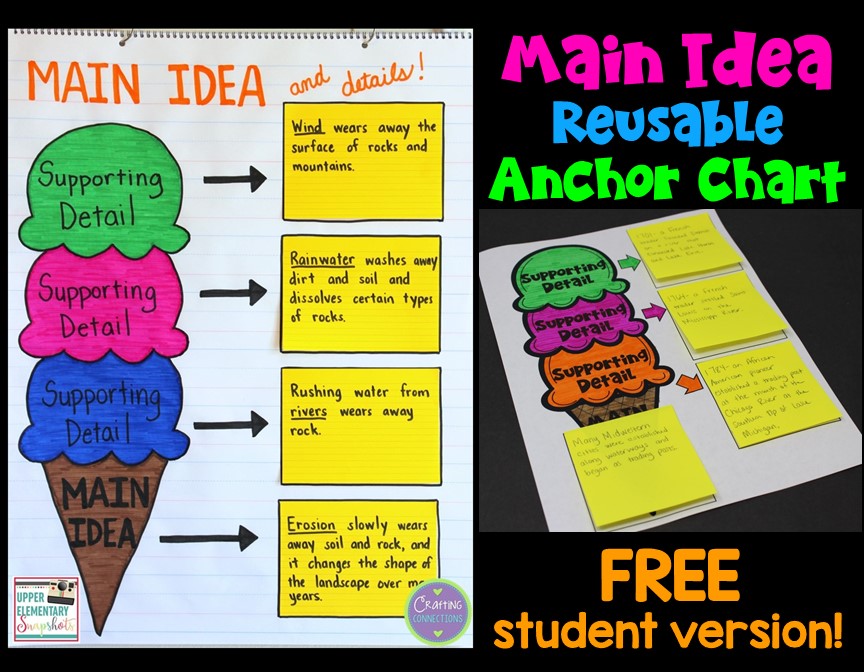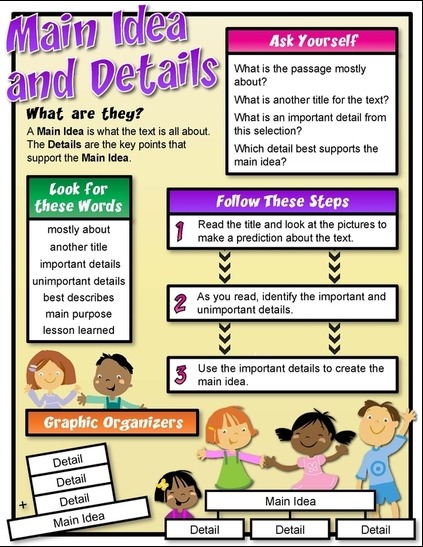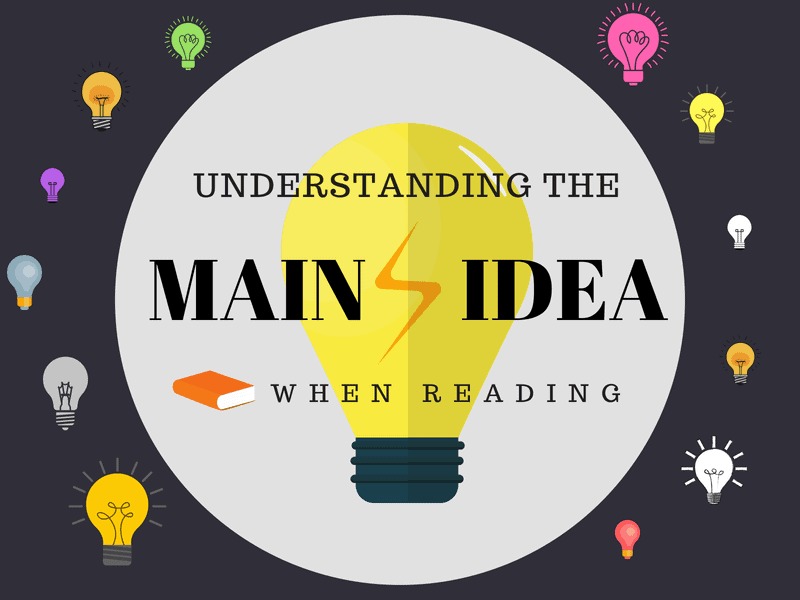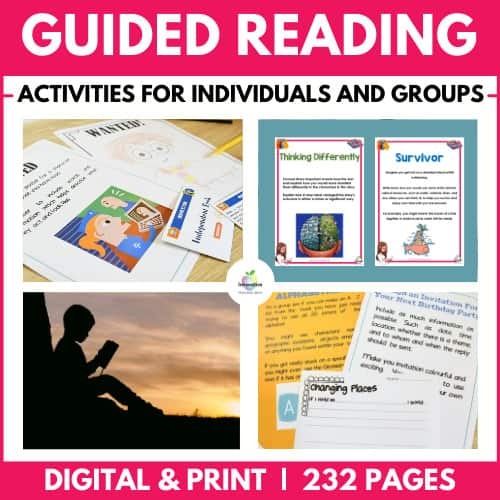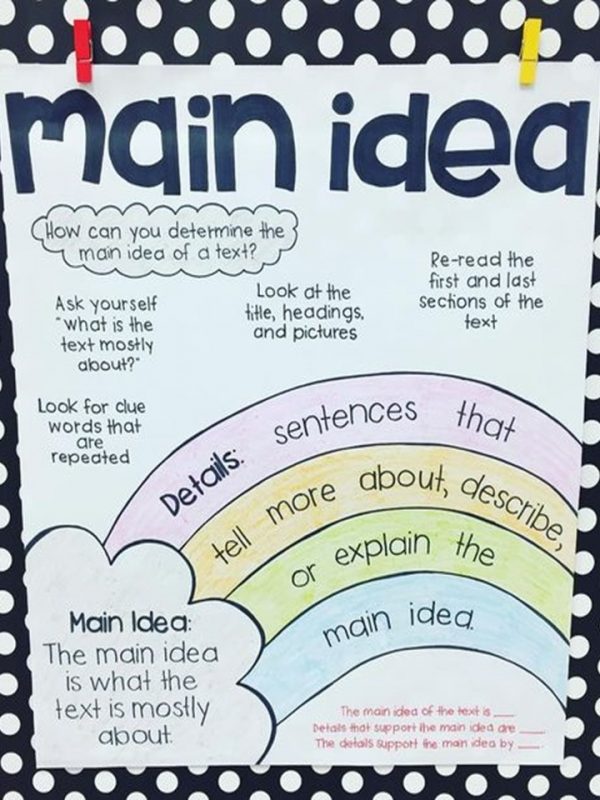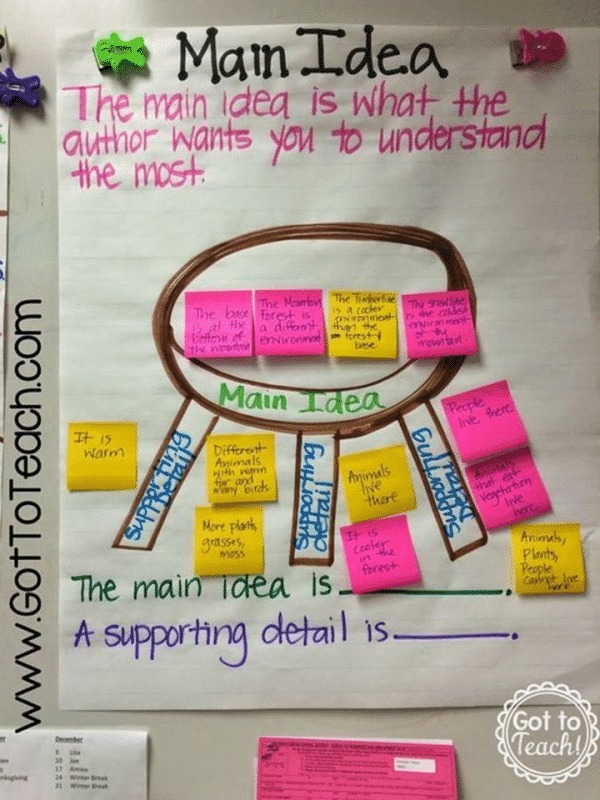It’s no coincidence that some institutions talk about their students ‘reading’ for a degree. Think about it: in so many ways, reading is the key to formal education. It’s no use reading without comprehending, though. The key to knowing what is going on in a text is to find the main idea.
From this resource, you will learn what to look for in a good anchor chart. I have also curated some resources you can use in the classroom.
Table of Contents
- Key elements of a good main idea anchor chart
- Main Idea Anchor Chart Resources from TeachSimple
- Main Idea Anchor Charts Examples
- From other teachers
- Final thoughts about main idea anchor charts
- Different ways of presenting the main idea in anchor charts
Key elements of a good main idea anchor chart
Above all, a good anchor chart must be logical
Whatever approach is adopted for the chart, the students must be able to follow the logic from main idea to reasoning.
A good main idea anchor chart will grab the students’ attention
This can be in the form of an innovative approach, or it can simply be the use of font, color and the way it is set out.
The students must be directed to the concept of the ‘main idea’
For older grades, there can simply be a subheading that says ‘Main Idea’. They will understand what to look out for, though you may need to remind them of how to go about finding the main idea.
For younger grades, look out for an anchor chart that asks key questions about the text, such as:
The students must express
The students must be guided to express their reasons for choosing the main idea in their own words. This can be achieved by asking focused questions, such as:
Why did you say that?
Can you find the supporting/secondary ideas?
What reasons can you give for choosing that main idea?
Why is the main idea not…?
Structure
The students must be presented with a structure to present their ideas. A good anchor chart may either provide a blank template for students to fill in, or it will provide a clear structure from which they can create their own anchor charts.
informative or interactive
An anchor chart for the main idea may be informative or interactive. The advantage of an informative chart is that it clearly states what the students must look for.
The advantage of an interactive chart is that it allows the students to get involved in the process of finding and writing about the main idea.
adaptation
Any good anchor chart about the main idea will allow you to adapt it. This can mean making changes to the chart, or using it in a different way.
It can also mean using the chart differently depending on the abilities or grades of the students.
Main Idea Anchor Chart Resources from TeachSimple
- Main Idea Anchor Chart By First In Line
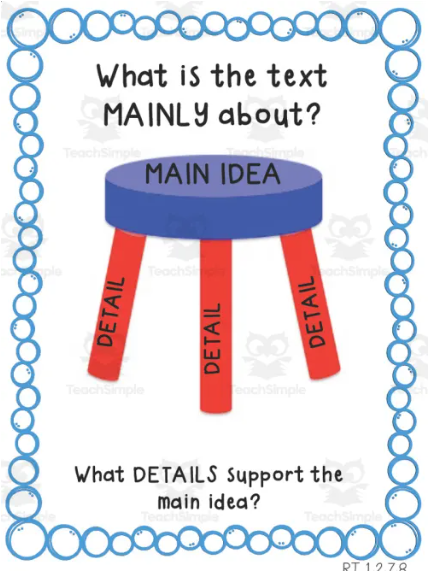
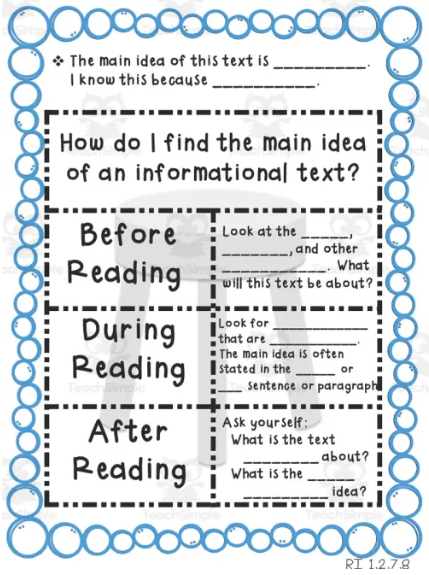
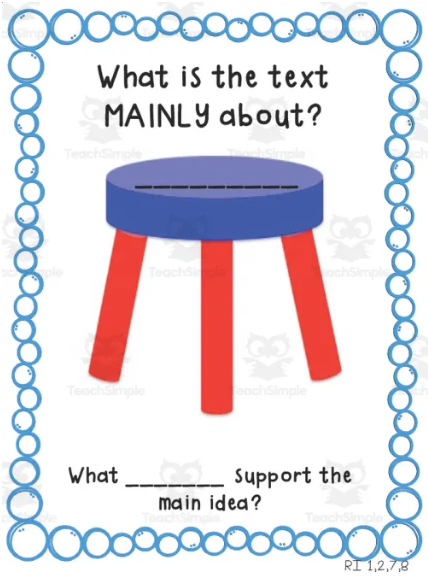
This resource consists of a set of 4 charts. The complete first one serves as a model for the other, blank ones to be filled in by the students.
- Day 13: Main Idea By First In Line



What is really great about this resource is the interactive activities. It consists of a set of comprehension and reading activities.
- Main Idea Graphic Organizers By DrDrew



This resource can be adapted for any grade, which makes it useful. It consists of a set of 5 graphic organizers. They are used for outlining the main idea and details of any text.
- Main Idea And Details Activities: Molly Pitcher Bio By Rap Opera For Kids!



I love the way this resource uses song lyrics as reading passages to present a different way of looking for the main idea. It is based on the idea that kids enjoy songs. They find the main idea and supporting ideas in the song lyrics.
- Reading Comprehension: Main Idea Chapter Slice By Classroom Complete Press



This resource teaches reading skills. The emphasis on finding the main idea, because it’s an essential part of the reading process.
- Main Idea Graphic Organizer By Have Fun Teaching
I love the way this resource takes the literal idea of a table and turns it into a blank graphic where the students can fill in points about the main idea.
Main Idea Anchor Charts Examples
- Good Readers Can Identify ‘MAIN IDEA’ By Mrs. McGarity
This resource clearly sets out the 5 main points to look for when the students are trying to identify the main idea. I love the way it has been produced, as if a student wrote it.
- Main Idea: Before, During And After Reading From Classroom Freebies Too
This can be used as a great way to teach a reading comprehension strategy. It gives steps for 3 stages of the reading process.
- Teaching Main Idea of Nonfiction Text From Teaching With Jennifer Findley
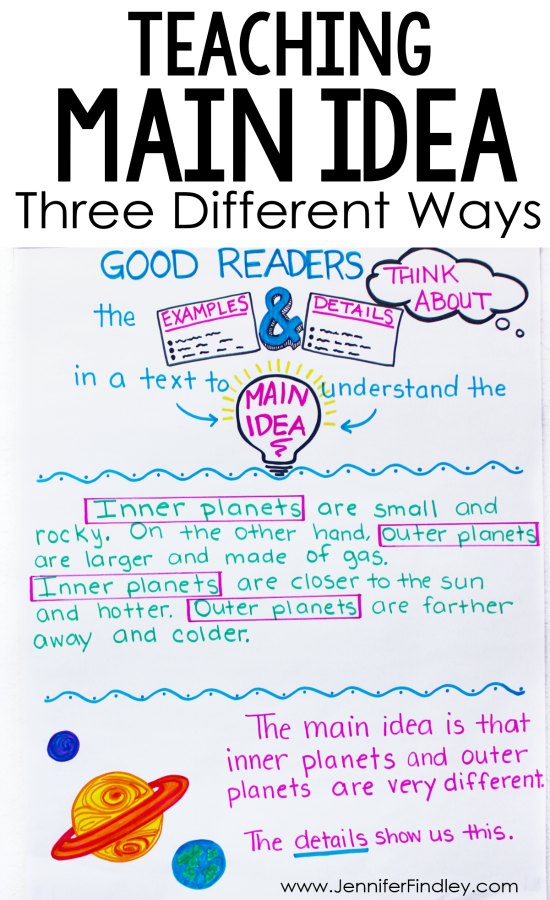
This resource is specifically aimed at teaching students a difficult reading skill: to identify the main idea in a non-fiction text. Three different strategies are presented.
- Bite Into A Tasty Book By Amy Lemons
What kid doesn’t go for food? So, why not present useful teaching strategies as a hamburger? This is an innovative idea that grabs one’s attention.
- I Can Explain How Key Details Support The MAIN IDEA From Weebly
This resource is an organized page for the students to fill in. It leaves space for the main idea, how it can be expanded and the reasons for choosing it as the main idea.
- How To Find Main Idea From Appletastic Learning
This resource works on a different idea, because it’s about reading an image and finding the main idea from the captions and heading. It is a great process to teach students about pre-reading and using hints from the text to find the main idea.
- Main Idea Workstation From Stuckey In Second
This resource consists of passages and a guide to find the main idea. What I find useful is that the students are directed to find the details that support the main idea. This guides them to be able to separate the main idea from the content.
- Main Idea And Details By Upper Elementary Snapshots
Students can use this ice cream cone anchor chart to determine the main idea along with three important supporting details. Fill out a graphic organizer with the student. Simply give each each of them sticky notes to write on.
- Main Idea And Details (What Are They?) From Mrs. Warner’s Learning
This resource is a graphic representation of how to go about finding the main idea. Students are guided through the steps to understand what the passage is about and then to work to identifying the main idea.
From other teachers
- Identifying The Main Idea Of The Story By Literacy Ideas
This is a comprehensive resource for helping students identify and decode the main idea of a text. It also gives a good definition of the term.
- Guided Reading From Literacy Ideas
This resource consists of literally hundreds of texts that can be used for all reading activities. You can choose and adapt them for different ability levels.
- Identifying The Main Idea From Elementary Nest
This resource consists of a set of blank pages that are ready to be filled in with points about main ideas. It is a great way to give structure and guidance, but allowing the students to pick out the relevant points from the text.
- Identifying The Main Idea And Supporting Detail From Elementary Nest
This engaging anchor chart is a great way for students to focus on the main idea and how to extract or formulate subtopics.
Final thoughts about main idea anchor charts
Main idea anchor charts are an invaluable resource in the reading process. They are also the first step in expressing comprehension of a text. Keep your anchor charts focused on the main idea and your students will become familiar and more confident about finding the main idea in a text and to be able to explain their choices.
Different ways of presenting the main idea in anchor charts
The concept of main idea can be presented in different ways in the form of anchor charts.
Begin with the reading process
The main idea of most texts can be found in the title or heading. This is what we look at in the first stage of the reading process: Pre-reading.
You can make an anchor chart to do this by:
- Use a short text on the chart itself.
- Make sure the text has a clear heading.
- Use arrows, colors or different fonts to take the students through the process.
For example:
The heading tells us…
This means the story is about this subject.
When we read, we must look out for what the story tells us about …
You can also leave the points open-ended and space for the students to fill in the blanks. This will make the anchor chart interactive.
Provide an empty template
This approach works particularly well for older grades, but you can adapt it for younger grades.
You can either find or create your own template. Let’s work with the idea of creating your own template.
It must have a very clear structure that shows that the main idea is most important. This should be presented as a bigger block, or at the top of the template.
Provide space for the students to fill in the reasons for choosing the main idea. This helps them find secondary points, which lead to the main point.
Demonstrate how to work through a process to get to the main point
Create a building on your anchor chart.
(For this approach, I suggest combining an informative and an interactive chart.)
At the top of the chart, begin by identifying the keywords in the passage.
The next level is the sub-points that can be worked out from the keywords.
Finally, the foundation of the article is the main idea.
This is a chart to fill in that is based on a passage about with jellyfish. The students are guided to find the main idea and to write down details in boxes.

by Jane Ballot
Jane Ballot has been in education for 37 years, teaching at all levels of school and at university, with extensive experience in developing educational resources.
